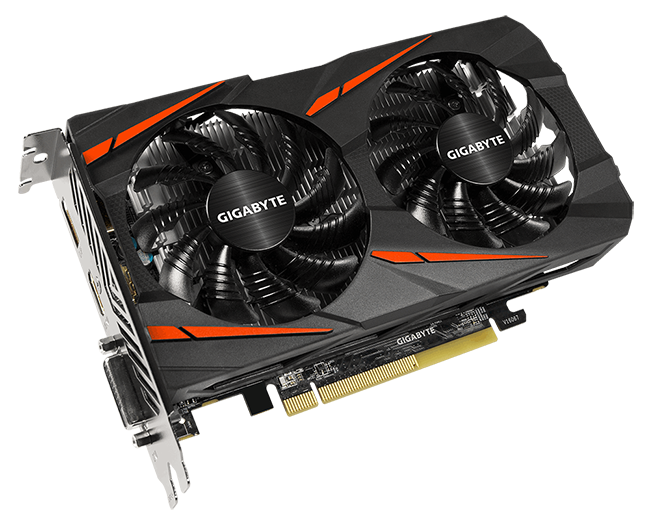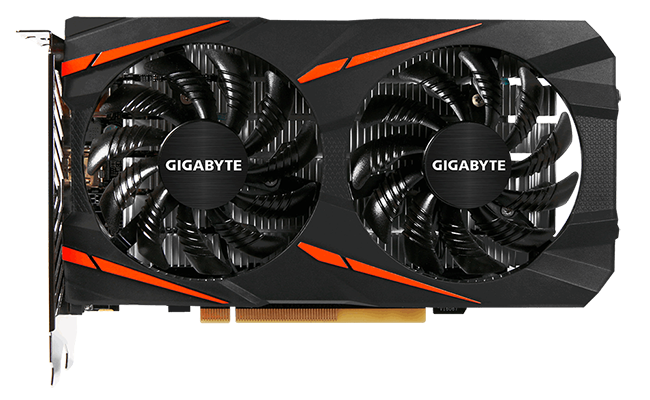Gigabyte RX 460 WindForce OC
Next up is Gigabyte, and we have both the 2GB and 4GB models in for this roundup. For the purposes of brevity, both are identical from a visual perspective, and both are the WindForce OC variants. Note that, in RX 460 form, there is no standard-clocked Gigabyte card.

Keeping costs in check, Gigabyte sticks to the reference PCB which means it's small and clearly compact. Measuring 19cm long, 11cm tall and 3.7cm thick, much like the Asus, it will fit into a wide range of chassis. Interestingly, as far as this model is concerned, the PCIe connector, whilst being x16 in mechanical design, interfaces with the motherboard at x8. This shouldn't pose a bandwidth problem at the resolution and framerates typically associated with this GPU.
Though Gigabyte calls these cards OC, the overclock on the core is meagre. Both are clocked in at 1,212MHz core, so just 12MHz above what we'd call stock. Making matters more painful for potential purchasers is our observation that the core speed isn't maintained at that figure - our logs showed an average speed of 1,148MHz. No other cards in this line-up drop substantially from their stated maximum.

And there's little reason for it because the temperature isn't overly high. Perhaps one cause, and what would appear as a benefit at first glance, is that both cards do without the 6-pin connector. This card pulls all its juice from the slot alone.
Under the hood, the card uses a five-phase power design, which is one more than the reference.

The cooler is simple and befitting a card of this type. There's no copper insert, a la Asus, and no secondary heatsink to cool the VRMs and memory rated at a stock 7Gbps. Whatever the ins and outs of the cooler, we're glad to see that the fans switch off at low loads.
Another benefit of keeping a design simple is attractive pricing. The 2GB-equipped card costs around £90 while doubling that framebuffer - which is useful in some titles, as we'll show you - increases the cost to £125. The larger-than-expected delta between the two has more to do with AMD charging a premium for GPUs used with a larger frame buffer than the intrinsic cost of the extra memory itself, we're reliably informed by an off-the-record chat with an AMD partner. So it's not all about the partner making more money.

Outputs are standard, and there's a a reasonable amount of airflow exhausted from the back. Gigabyte, then, goes for the value side of things.









